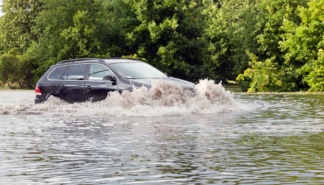by Erinn Aspinall
 Record setting snowfalls in February, combined with heavy rains and quickly warming temperatures, have set the stage for major flooding in Minnesota this spring.
Record setting snowfalls in February, combined with heavy rains and quickly warming temperatures, have set the stage for major flooding in Minnesota this spring.
Flood warnings have been issued along the Minnesota and Mississippi Rivers. Within the Twin Cities, this means that roads may become impassable, that Harriet Island will start to become submerged, and that flood water will likely reach homes and other property.
We’re here to share trusted information compiled by librarians at the Bio-Medical Library and the National Library of Medicine to help prepare for flood events.
Keeping informed
- Updraft Blog (MPR News)
Weather-related blog that provides updates on river flood warnings in the Twin Cities and across Minnesota. - Local flood warnings (National Weather Service Office – Twin Cities/Chanhassen)
Interactive map allows you to click on a location for a detailed flood forecast. - Real time flooding information (USGS)
Interactive map allows you to select a state to find river flood levels.
What to do before, during, and after a flood
For public health professionals and first responders
- Floods: Health Information Guide (National Library of Medicine)
Provides overview information, along with access to literature on specific topics such as mold, wounds and injuries, toxic hazards, and responder safety. Some multilingual information is provided.
For the General Public
- Flood Safety (American Red Cross)
Checklists for what to do before, during, and after a flood event. Provides guidance for protecting you, your pets and animals, and your home. - Flooding (Environmental Protection Agency)
Links to resources that will help you before, during, and after a flood event. Topics include drinking water and food, mold, and managing debris.
Support after flooding
- MedlinePlus Coping with Disasters (National Library of Medicine)
Learn about common reactions after traumatic events, and how coping tips for adults and children. Some multilingual information is provided. - Disaster Distress Helpline (SAMSA)
Provides 24/7, 365-day-a-year crisis counseling and support to people experiencing emotional distress related to natural or human-caused disasters.
Disclaimer
Never disregard your health care providers’ advice or treatment because of something found online. Information provided here is not intended to be used as medical advice, diagnosis or treatment. All content is for general information purposes only. You should review all information from these and other sources with your healthcare provider. Boynton Health clinics are open to U of M faculty, staff, and students.




